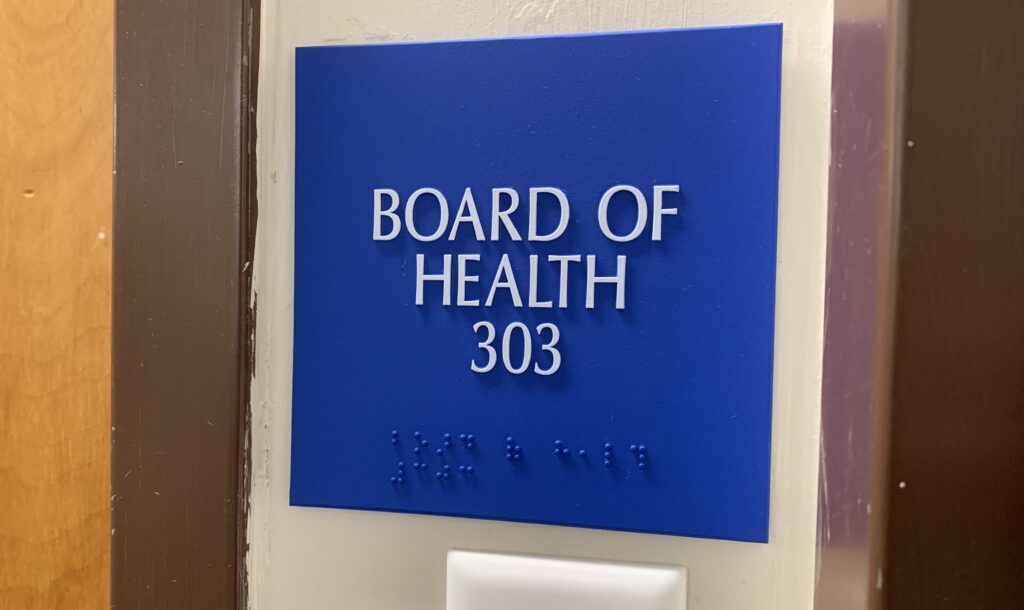Not only is Hopkinton’s PFAS problem not improving, the chemicals are turning up in other water supplies in town, health director Shaun McAuliffe shared Monday.
Speaking at the Board of Health’s regular meeting, McAuliffe said elevated levels of PFAS (man-made per- and polyfluoroalkyl substances) — previously detected in Well 6 of the town’s water supply off Fruit Street — have been detected in the water supplies for the Hopkinton Country Club, the Metrowest YMCA facility and the Village of Highland Park community (Wedgewood Drive area).
“The DEP [Department of Environmental Protection] has had an open dialogue with all three parties, they’ve gone through the notification process and they are working towards developing solutions to help those three water supplies,” McAuliffe said. “The thought is that in those three cases the problem is related to the PFAS migrating from their leaching fields. PFAS chemicals are fairly mobile, so they’re migrating from the upper aquifer, getting into the bedrock aquifer and then showing up during the testing.”
McAuliffe indicated the PFAS issue is likely to get worse before it gets better.
“The more we get into this, the more we realize that it’s in our food chain, it’s in the clothes that we’re washing, it’s in almost every part of our life,” he said. “And as we wash ourselves, our clothes, as we eat and drink, portions of the PFAS that we’re either ingesting or discharging from our toilets or our washing machines, it’s getting into the septic system and passing through. The thought is that it should improve as we stop using products that have PFAS/PFOS chemicals in them. And then it’s just a matter of how do we keep it out of our water system.”
In other Board of Health news, McAuliffe said COVID cases continue to drop in town.
“We continue to see a significant improvement in our case load,” he said. “Our case counts at the beginning of the month were like 7.9 per day. We’re down to 3.96 per day. So our case counts are improving. Our positivity rate has dropped to 3.18. We’re going to end the month at about 111 cases. Comparing that to 1,047 we had in January is a significant improvement.
“Then when you go into the CDC’s county database, their risk page, you can see that with our positivity rate below 5, that puts us in the low risk rating. Our count per 100,000 is at 18.7, so that has us in the lower end of the moderate risk group. Then our vaccination rates are extremely high, our booster rates continue to improve, and then just the sheer number of residents who contracted omicron, all of that together provides a significant level of protection. … That’s why we feel confident we can move to a face covering optional program.”
McAuliffe said his department will continue to monitor case counts, encourage residents to get vaccines and boosters, and work with the state’s Department of Public Health going forward.

















0 Comments